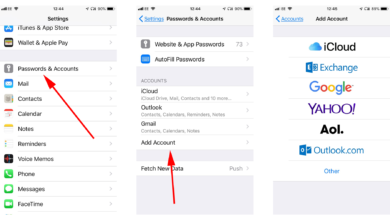Maximizing Efficiency And Effectiveness: Automating Security Operations With SOAR Strategy

Keeping up with security requirements and advancing threat detection requires a standardized approach. This system may collect data from various sources and create repetitive, automated processes replacing manual tasks.
This enables security analysts to focus on more critical work and less on time-consuming, repetitive processes. It can also decrease alert fatigue, allowing analysts to concentrate on activities that require deeper human analysis and intervention.
Streamlined Incident Response
Streamlined incident response is a vital part of any organization’s cybersecurity posture. As a result, it can help your security team detect and mitigate incidents quickly, which helps protect critical data and systems, as well as your reputation and revenue.
First, assess your unique risks and assets to streamline your incident response process. This will allow you to develop response solutions tailored to your most critical vulnerabilities and security priorities.
Another critical component of streamlined incident response is an optimized incident escalation process. Escalation processes are designed to flag issues that require immediate attention from the right teams and personnel. This includes determining who must go on-call, who should communicate with the affected parties, and what post-mortem procedure is needed.
Finally, ensuring your incident response team has the tools to perform their duties is essential for a streamlined process. This includes automating alert monitoring, responding to threats, and providing reports to share with the right stakeholders.
Streamlined incident response is an essential component of the security orchestration automation and response or SOAR Strategy because it helps reduce your mean time to detection (MTTR) and mean time to respond (MTTD). It also introduces efficiency to security operations, allowing you to disburden analysts from one-by-one tasks prone to distraction and inefficiency.
Automated Threat Detection
The SOAR strategy helps organizations detect threats in a more proactive and automated manner. It integrates data from Security Information and Event Management (SIEM) tools, firewalls, intrusion detection systems, user behavioral analytics (UBA), threat intelligence platforms, and other technologies.
It also helps security teams identify strange and potentially dangerous activities using AI-led threat analysis. Moreover, it improves reporting and communication by aggregating all security operations activities in one place.
Unlike traditional SIEMs, SOAR platforms help security personnel detect genuine threats with fewer false positives. They also automatically invoke investigation and remediation workflows to reduce alert fatigue.
Security teams must investigate fewer alerts and respond to lower-level events. This helps to reduce MTTD and MTTR, decrease dwell time, and increase readiness for future threats.
SOAR platforms use prebuilt or customized playbooks to carry out complex activities like phishing detection, detecting malicious Uniform Resource Locators (URLs), and blocking phishing emails. These playbooks can be triggered when a malicious URL is seen during a scan and may include checking other employee inboxes for similar emails and banning the sender’s IP address if needed.
When choosing a SOAR platform, look for features that enhance efficiency and effectiveness, such as automation, custom integrations, ease of use, and connectivity to other security tools. Ensuring the platform ingests alerts from detection tools your organization currently deploys and executes playbooks that coordinate actions across enrichment, response, and allied agencies is essential.
Real-time Reporting
A SOAR system’s dashboard provides a single, intuitive hub for viewing all security-related data and activities. It can include metrics related to notable events, playbooks, connections with other tools, workloads, and more. This allows your team to review data in real-time, reducing the need to crunch numbers or spend an entire day reviewing information.
With a SOAR platform, your organization’s security operations center (SOC) can view all relevant data in one place and respond quickly to incidents. This saves your team members valuable time, which they can devote to other goals to help the business succeed.
Another benefit of the SOAR strategy is that it automates several routine processes, including vulnerability management. This eliminates the time spent on manual tasks and false positives that can significantly annoy SOC teams.
The SOAR strategy also increases visibility by aggregating and validating data from threat intelligence platforms, firewalls, intrusion detection systems, and SIEM technologies, enabling SOC analysts to contextualize incidents and improve incident response practices. This enhanced data context can reduce the Mean Time to Detect (MTTD) and Mean Time to React (MTTR).
By enhancing efficiency, SOAR security solutions allow organizations to scale up their cybersecurity efforts and maximize their return on investment. It helps security teams to manage risks better and protect their assets, and it can slash operational costs by streamlining processes that consume time, resources, and personnel.
Increased Visibility
Organizations must have the best security practices and processes to prevent and respond to cyberattacks. This requires a team of experts to analyze and monitor the threat landscape in real time.
Ideally, a successful security program includes SIEM and SOAR solutions to enhance visibility and streamline incident response. However, many organizations still need help managing thousands of alerts from their SIEM systems daily. This can be incredibly time-consuming and laborious to process.
SOAR tools can help automate security operations in this situation, enabling teams to respond to threats much faster. Instead of triaging alerts manually, SOAR programs can automatically use machine learning to detect the most critical threats.
This benefits any organization, especially when dealing with large amounts of data. It also ensures that the team can access all the information needed to make informed decisions about threats.
As attackers increasingly adopt methods designed to make their activities hard to detect, SOAR technologies can help companies collect more data and intensively analyze it for potential threats. This allows them to identify the most severe threats and quickly resolve them.
In addition to these benefits, SOAR platforms can enhance efficiency and effectiveness by enabling teams to automate routine tasks and implement standard incident response protocols. These capabilities can help couples to focus on high-value security activities, allowing them to keep up with the evolving threat landscape and protect critical assets and systems.






